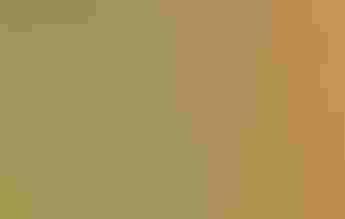
It's a basic idea, but it makes a whole lot of sense: Native plants s than introduced flora. More specifically, because these trees and shrubs have evolved with the local wildlife, they harbor more insects or yield more berries and fruit than non-native plants, providing greater amounts of food for certain critters. This seemingly obvious idea has been buttressed by years of research by Doug Tallamy, whose has shown that these plants host many more caterpillars, and that yards with more native vegetation host more native-bird species.
But somewhat surprisingly, there haven't been much in the way of dedicated studies linking this previous research to the diet of a certain bird species. Now, a new analysis in , released online this month, shows that yards filled with native vegetation do indeed offer more food for nesting birds than non-indigenous species. In a two-year survey of Carolina Chickadees around Washington, D.C., scientists connected songbird diets to the plants they source their food from. The results clearly support Tallamy's previous work showing that native gardens are packed with caterpillars and other insects during the time when many avians are breeding.
“Quantifying insects as bird food is difficult,” Desiree Narango, the University of Delaware PhD student who led the research, says. (Tallamy was a co-author on the paper.) To start, she and her team catalogued the origin of each tree and shrub species around 97 suburban homes, selected through the . They then scoured the leaves of 16 plants at each site for caterpillars and continued to track which of the flora received the most visits from chickadees. They also kept tabs on nest building on and near the sites throughout the chickadees' breeding window, which typically falls between April and early June in the region.
After analyzing the data, Narango found that Carolina Chickadees nested more often in yards with an abundance of native trees than in yards with more introduced species. Oaks, cherries, elms, and maples were among the top performers because they housed the most moth and sawfly larvae—important food sources for birds trying to rear young. And when it may take 6,000 to 9,000 caterpillars in a season to raise a brood of five chickadees (as previous studies have shown), the presence of natives becomes even more apparent. “Carolina Chickadees are a model species because they’re generalist foragers,” Narango says—meaning they’ll scrounge for food most anywhere. By gauging their preferences, she was able to get a sense of what plants other common suburban songbirds might lean toward.
Most of the vegetation Narango searched was introduced, and thus had one caterpillar or less. But in native trees like oaks, she found scores of larvae—often 20 or more in the space of five minutes. These numbers match Tallamy’s “,” which ranks different types of plants by the diversity of caterpillars they foster. For example, the list holds that some oaks have up to 534 species of moths and butterflies (recently updated to 557); Prunus like wild cherry and plum can yield up to 456 species; and maples support up to 297 species.
While the non-native cousins of some of these trees do support some larvae and other food, they aren’t nearly as productive. Unrelated, introduced species are even worse. “Eighty-six percent of the country is privately owned, so when you create landscapes out of [introduced] Bradford pear and crape myrtle, there are almost no caterpillars,” Tallamy says. “That’s not just the end of reproduction for chickadees, but of all the birds out there that need those insects.”
This study, combined with Tallamy’s index, has the potential to be a huge tool for education by helping people make more informed planting choices, Roarke Donnelly, director of the environmental studies program at Oglethorpe University, says. But there’s one problem: finding nurseries that offer natives. “When I go looking for plants I know birds use, I can’t find them, either as seed or seedling,” Donnelly says. “I don’t think growers know there’s a burgeoning demand for this. We have to hook up them up with residents—there’s huge potential.“
Narango also believes that her results provide convincing evidence that planting native is in a bird lover’s best interests. “The trees [our color-banded chickadees] were going to were covered in warblers, tanagers, and orioles,” she says. “They’re basically telling us what these other birds want.”
Correction: This article has been updated to state that 86 percent, not 82 percent, of the country is privately owned.

